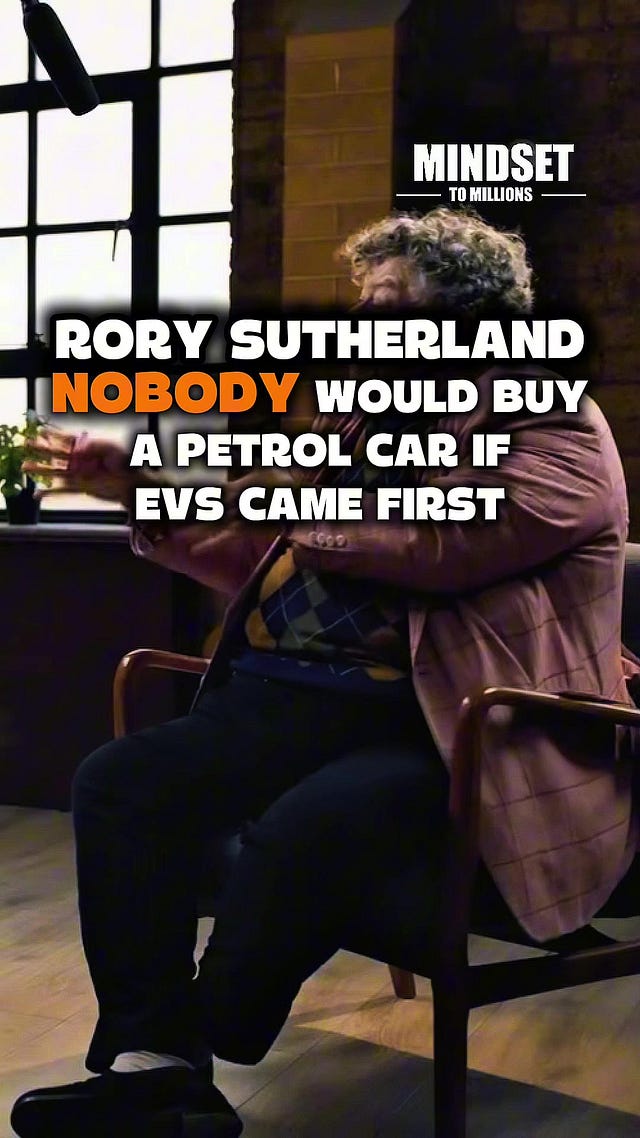193: The power of not knowing
Pete Doctor, Rory Sutherland, Sarah Evans and some AI mechanics
Not knowing is such a gift for creative people.
Not knowing how or when the idea will emerge, why it comes the way it does.
I think this is exactly, precisely what gets taught out of children—the comfort of not knowing—which translates later in life to, “Oh, I’m not creative.”
But for those of us who put that discomfort in a pocket, who continue to pull it out and work with it, the appeal is clear.
As Pixar’s Chief Creative, Pete Doctor, puts it,
“At every film I’ve ever worked on there comes a phase where all the tricks have run out. I’ve tried everything and it still didn’t work and then you do something else [unexpected, wrong, cockamamie] and that’s what solves it. I think that’s an essential part of the creative process, that you’re discovering this thing. If you knew exactly what you wanted from the beginning, it wouldn’t be very interesting.”
Discovering this thing.
This thing you couldn’t yet imagine, but only a journey of unknowns can reveal.
Pete’s conversation with Mike Birbiglia (Apple, Spotify) pays dividends. I’m especially fond of the notion the creative process “is going to expose your weak underbelly.” How can it not? And if your underbelly is an addiction to certainty, well, apologies in advance.
The good news is AI will not make the process any less uncomfortable.
We still get to do battle with the muse, with expectation, with ourselves—just faster, and more of it. The joy of creativity is moving through that initial batch of mediocrity and into the unknown, into the realm where unexpected, unforeseen combinations bounce off of each other and spark something novel.
Here’s a recent example.
Kudos to Noam Sharon, Tal Rosenthal and Amir Ariely for braving the volumes of Veo3 outputs to conjure this spec piece for Liquid Death. The foreshadowing is nice. This one feels like the humans came up with the concept, the script. But what do any of us know? What AI brings to this party is an ability to leap over casting, location scouting, director’s treatments, production negotiations and a zillion other details and get to an edit. Another way to think about this is the patience required to make an idea like this has shifted from waiting on real world logistics to waiting endlessly for an AI to render. Say what you will about the visual aesthetics, at least there’s a story.
And then there’s AI mediocrity.
This piece, from Secret Level for eToro leverages AI to skip past lots of real world logistics and get to an edit. But is there an idea here? Did no one ask ChatGPT, “is there a more intriguing way to suggest our service is everywhere?”
If I wasn’t a creative director I would aspire to be a behavioral economist.
In fact I’ve suggested all of marketing, design and advertising is a subset of behavioral economics here, here and here. And here’s a lengthy piece about today’s economics punter, Ogilvy’s Rory Sutherland.
Rory provided a recent example I can’t get out of my head: “What if the case for electric vehicles presumes we always had them and now internal combustion engines were a newfangled idea?” How might that reframe our behavior towards the economics of transportation? Here’s the TikTok:

 Tiktok failed to load.
Tiktok failed to load.Enable 3rd party cookies or use another browser
In short: Picture a world where quiet, clean EVs—boasting very few moving parts—have been the norm for decades. In other words, what if Ferdinand Porsche’s original idea had taken root?
Now, in comes an innovative engineer with a fresh idea: Instead of an electric system, cars should lug around gallons of flammable liquid, use an engine with 250 moving parts in the drivetrain, oh—and this innovative new approach will spew noxious fumes and be very loud comparatively. Added bonus, unlike your electric vehicle, you can’t just fuel an internal combustion engine at home or work—no, we’ll also have to build a network of fueling stations to make this idea work.
Who on earth would support such a ludicrous notion? And yet here we are, clinging to the status quo for all kinds of beloved reasons. If your team or client are stuck where they are because of sunk costs, et al, this type of reframe might help advance the conversation.
Sarah has a brilliant idea
The process of creating a spec portfolio is radically different in the age of AI. (Thanks to
for the link.)As Sarah Evans details on LinkedIn, a new approach uses AI to first aggregate, summarize and define a persona of a marketing, creative or comms leader you admire. Now you’ve got a proxy to engage with.
Next, work with AI to give yourself the kinds of assignments this leader might be evaluating. Write social copy, define an actionable insight, build a media list with rationale, develop video concepts.
Now, ask the AI proxy to evaluate your work. What can you learn? How might you improve it?
(Sidebar: If I ran an agency, I’d have AI proxies for every client and you can bet we’d do all of the above to de-risk and help sell the work.)
Last but not least, “build a case study to show what you did, how you thought,” and most important, “now post it on linkedin. tell the story of what you built, tag the brand, and show your work.”
I’m going to be using this exact assignment soon.
🤖 🍁 AI for Artists and Entrepreneurs (online)
Speaking of: From August 25 - December 12 I’ll be teaching a wholly revised, very in-depth, asynchronous curriculum for MCAD. You can register for it here.

